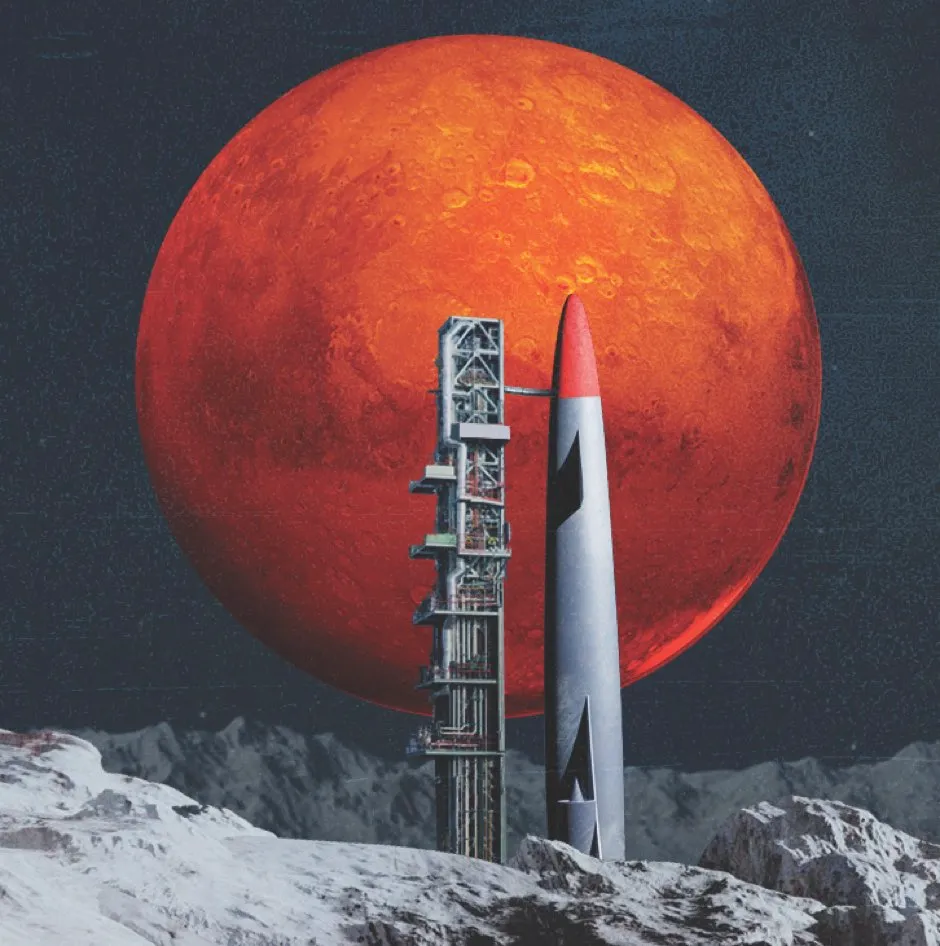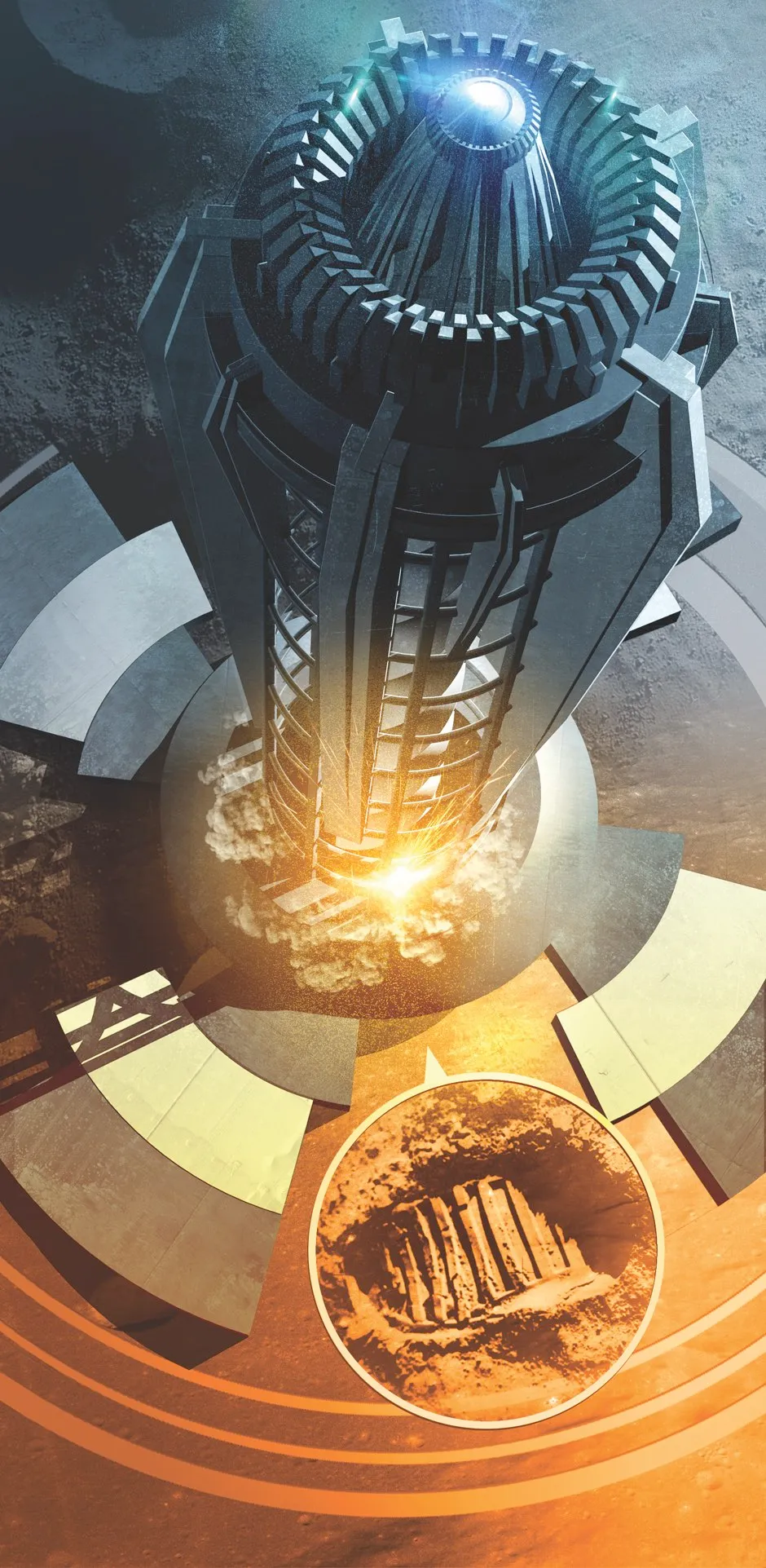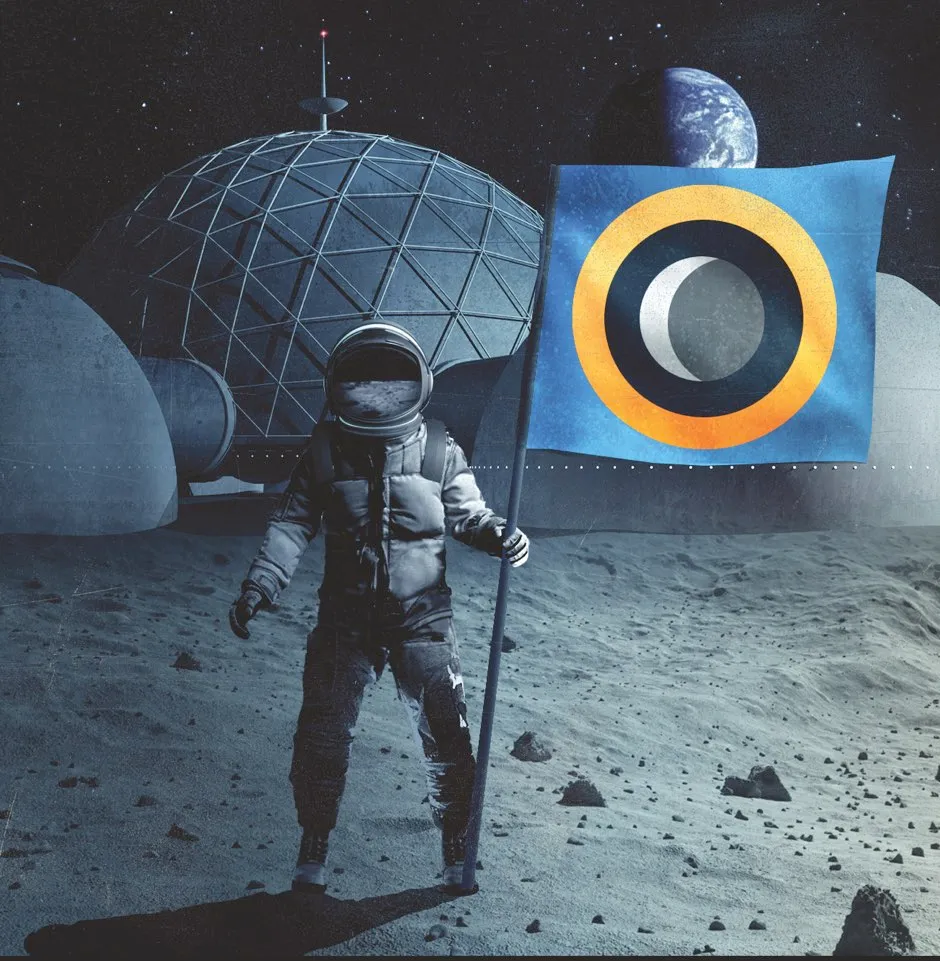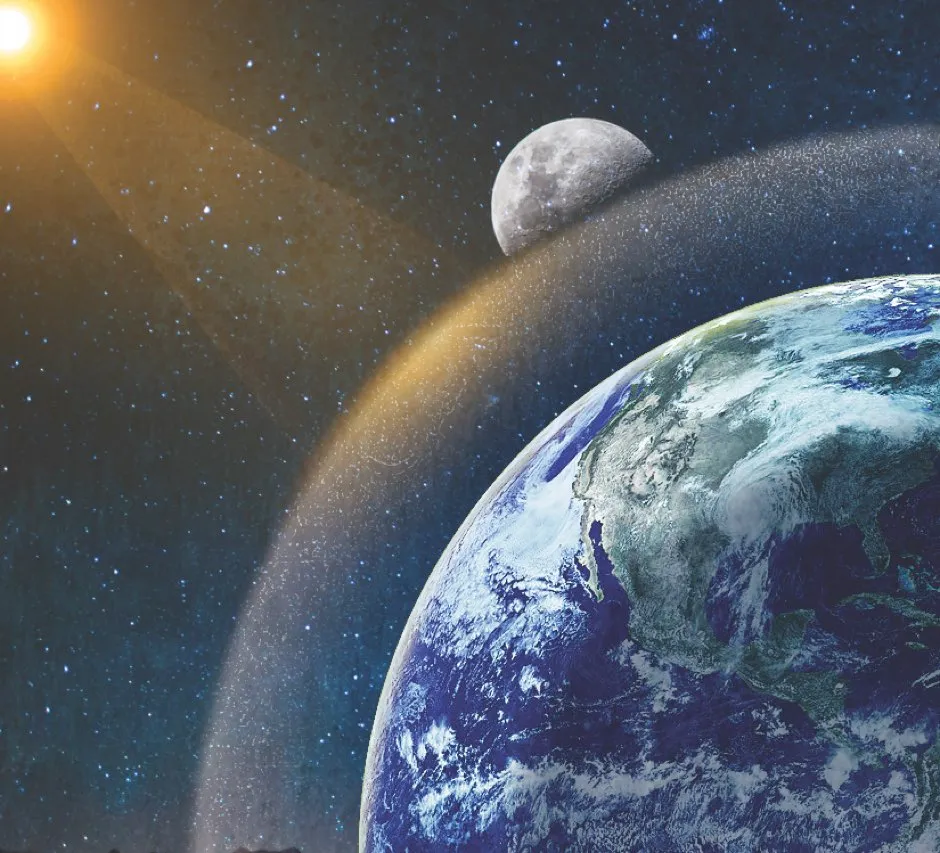Thanks to our exploration of the Moon over the past decades, we now know that it is a potentially huge repository of natural wealth. For a start, there appears to be abundant water ice at the Moon’s south pole – crucial for setting up lunar bases or colonies.
There are rare-earth metals such as neodymium and lanthanum, which are used in technologies like speakers, smartphones, batteries and camera lenses, and there are plenty of other useful metals, such as silicon, titanium and aluminium.

What’s more, it’s thought that the Moon’s surface has a relatively high concentration of a rare isotope of helium called ‘helium-3’, which could be used to power future nuclear fusion reactors. Companies are already drawing up plans to develop the technology to mine the Moon. But what would be the consequences of going after these resources?
Read more fromWhat If:
1
There could be a lunar ‘gold rush’
A Moon race is hotting up again. This time, it’s not just between the US and the USSR, as it was in the 1960s. Instead, many countries, such as India and China, are involved, as well as private companies such as SpaceX in America and SpaceIL in Israel.
They are interested in finding a way to build a presence on the Moon that will be sustainable over the long-term. And they are also interested in whether mining the Moon can be a feasible economic prospect. Strikingly, there is little international law to regulate this endeavour.
The so-called Moon Treaty was opened for countries to sign in 1979. It tried to protect the Moon by calling for it to become the ‘common heritage of mankind’. But although the treaty became active in 1984, no major space-faring power has ever signed it – the US, UK, Russia, China and Japan are all notable by their absences.

This lack of take-up is largely because ‘common heritage’ implies shared ownership and the equitable distribution of resources. So, the proceeds from the sale of any resources mined on the Moon would have to be equally distributed around the Earth, rather than kept by the country or company that extracted them. And very few countries, it seems, are willing to sign away their profits for the common good.
What’s unfortunate is that the treaty also called for an international body to govern the exploitation of the Moon’s natural resources. Without such regulation, a winner-takes-all mentality could take hold, leading to a kind of lunar ‘gold rush’ by the countries and companies that can afford to make the trip.
2
We could get to Mars quicker
All you need to manufacture rocket fuel is water. A process called ‘electrolysis’ splits water into hydrogen and oxygen, which can together be used as fuel. And if we are going to attempt a mission to Mars, then we’re going to need a lot of fuel.
Manufacturing the fuel on Earth may seem like the obvious answer, but it then needs to be launched into space. To overcome our planet’s massive gravitational field, rockets must reach speeds of 11km/s, and that takes a lot of money. The Moon, though, has only one-sixth the gravity of the Earth, and so fuel could be launched a lot more cheaply once it has been made.

In 2017, students involved in the Caltech Space Challenge proposed designs for a lunar launch and supply station for deep space missions. The idea was to mine ice on the Moon and launch it to an orbiting lunar ‘gas station’. The station would then transform it into hydrogen-oxygen rocket fuel and transfer it to long-distance spacecraft, such as those expected to be going to Mars in the 2030s.
However, Dr Robert Zubrin, president of space tech company Pioneer Astronautics, and a long-time advocate of Mars exploration, thinks that this is a circuitous route, and would cost more in the long-run. “The propulsion requirements to go to the Moon to get [the lunar rocket fuel] are greater than those for flying directly to Mars,” he says.
3
We could lose a valuable scientific resource
The Moon is a scientific time capsule. As it lacks an atmosphere, there is no weathering or erosion of its surface. The cratered face we see represents 4.5 billion years of astronomical history. We’ve lost that ancient geological record on Earth because of erosion and the endless recycling of the planet’s crust via plate tectonics. Could mining cause the Moon to go in the same direction?
Even before we get to the mining stage, the mere act of setting up a lunar base for mining operations will involve destroying large quantities of the lunar soil (‘regolith’) to make way for buildings, or to make the building material itself. Any of the destroyed rocks could contain valuable geological clues as to how the Moon, and by extension the Earth, formed.

But it’s not just scientific knowledge that could be lost. The early Space Age landing sites on the Moon, such as the Apollo landing sites, are now culturally significant sites. “As soon as we start more regular trips to the Moon, we run the risk of destroying these sites,” says Dr Alice Gorman, a space archaeology expert at Flinders University, Australia.
Even if we don’t damage the sites directly, Gorman points out that the dust thrown up by the landers could erode or cover the sites, erasing the famous bootprints left by the astronauts, for example.
Every society has its own way of relating to the Moon – and that will inevitably change as we start to mine it. “I don’t believe that things should always stay the same,” says Gorman, “but we do need to think about these things, and make informed decisions.”
4
The Moon could declare independence
In 1967, the Outer Space Treaty became a part of international law and banned countries from claiming ownership of any celestial body. This meant that neither the Soviets nor the Americans could claim sovereignty when they landed on the Moon.
But what about settlers on the Moon banding together to declare their ownindependence? Prof Christopher Newman, space law expert at Northumbria University, thinks it unlikely, at least in the first instance.
“The Moon is close and connected to the Earth, so I think we are going to see a bleeding over of terrestrial nation states onto the Moon, rather than a separate lunar colony establishing its own identity,” he says.

Although this at first seems to go against the principles of non-ownership enshrined by the Outer Space Treaty, there is an obvious way it might happen. Each nation will want to build its own infrastructure and will most likely concentrate its efforts into specific places. “Although there will be no sovereign claims to ownership of those regions, there will effectively be zones of influence,” says Newman.
However, if mining takes off and becomes prosperous, things could change completely. The country zones could start to merge as activities expand, and the old national bonds could start to feel less important. In this way, a lunar culture distinct from Earth’s could develop, and as soon as the lunar colonists decide they have more in common with each other than with any one nation on Earth, independence could become an option.
5
We could reverse climate change
There is one thing that the Moon has in absolute abundance: dust. And it’s a total nuisance. It’s highly abrasive, so it wears down surfaces and damages seals. It’s dark and clingy, so coats anything that’s taken outside, and it’s toxic as well, posing a health hazard to any astronaut who inhales quantities of the stuff. “The dust is one of the greatest unsolved problems in returning to the Moon,” says Gorman.
But there might be an overwhelmingly positive use for this all-pervasive powder: saving the Earth from climate change. In 2007, astrophysicist Prof Curtis Struck at Iowa State University looked into the feasibility of using the dust to shade the Earth from the Sun’s light.

As a last resort to combat global warming, sunshades in orbit around our world could cut down the amount of energy we receive from the Sun. Struck suggested that these sunshades could be nothing more complicated than clouds of lunar dust transported from mines on the Moon and dumped into strategic places in orbit.
There would be downsides. Struck pointed out that the clouds would scatter the Sun’s rays and therefore make night on Earth brighter, producing more light than the full Moon. But as he writes in the closing lines of his paper: “Humanity has already made changes that adversely affect the global environment of Earth. With the methods described above we may be able to do so in ways that improve that environment.” Even so, we’ll file this one under ‘desperate measures’.
Read more about the Moon: